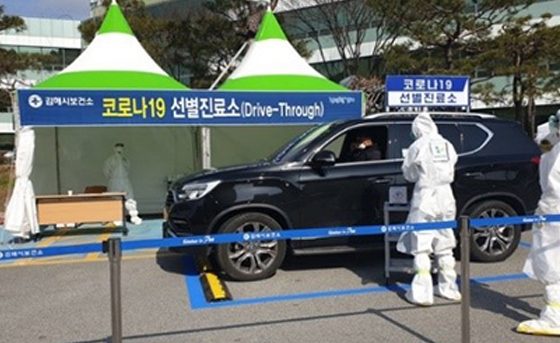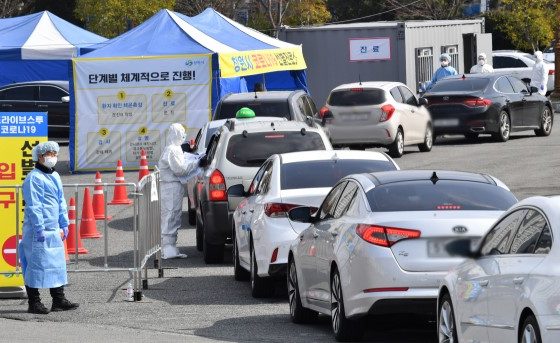[asvc_header_block title=”Drive-Thru Screening” subtitle=”Republic of Korea” header_font_size=”h1″ align=”center” fontsize=”medium” line=”0″]
Drive-thru screening is a screening method adopted to address the rising demand for COVID-19 testing. Under the system, a driver is checked for fever or breathing difficulties and has his/her samples taken from inside the car by medical staff in protective suits at a drive-thru coronavirus clinic. The entire process takes less than 10 minutes, which enables authorities to diagnose more people in a short period of time. It has reduced the waiting and testing time and the risk of secondary infection in waiting rooms.
FEATURES
- Under the system, a driver is checked for fever or breathing difficulties and has samples taken from inside the car by medical staff in protective suits.
- The entire procedure takes less than 10 minutes.
- Unlike conventional tests, which require the screening room and waiting area to be sterilized every time a patient comes and goes, this system does not need the screening area to be disinfected every time after use.
- In addition, since the patient remains inside the vehicle, there is no need for medical facilities like negative pressure rooms (isolation technique to prevent cross-contamination from room to room).
ONGOING RESULTS
- Helps save time in testing and minimizes risk of people getting infected in the testing area as it is done inside the car.
- The testing capability of a drive-thru clinic depends on each center’s workforce and operating system, but it can generally collect samples from six people per hour, three times more than a normal coronavirus testing clinic.
- There are about 50 drive-thru testing stations in South Korea, but the number is expected to rise as many municipal governments are considering opening them in their regions.
- Many countries including the US and Germany have benchmarked the idea and are rolling out drive-thru testing stations in the hope of keeping potentially infected people away from hospitals.
Sources: CNN, CBS News, BusinessInsider, Reuters



